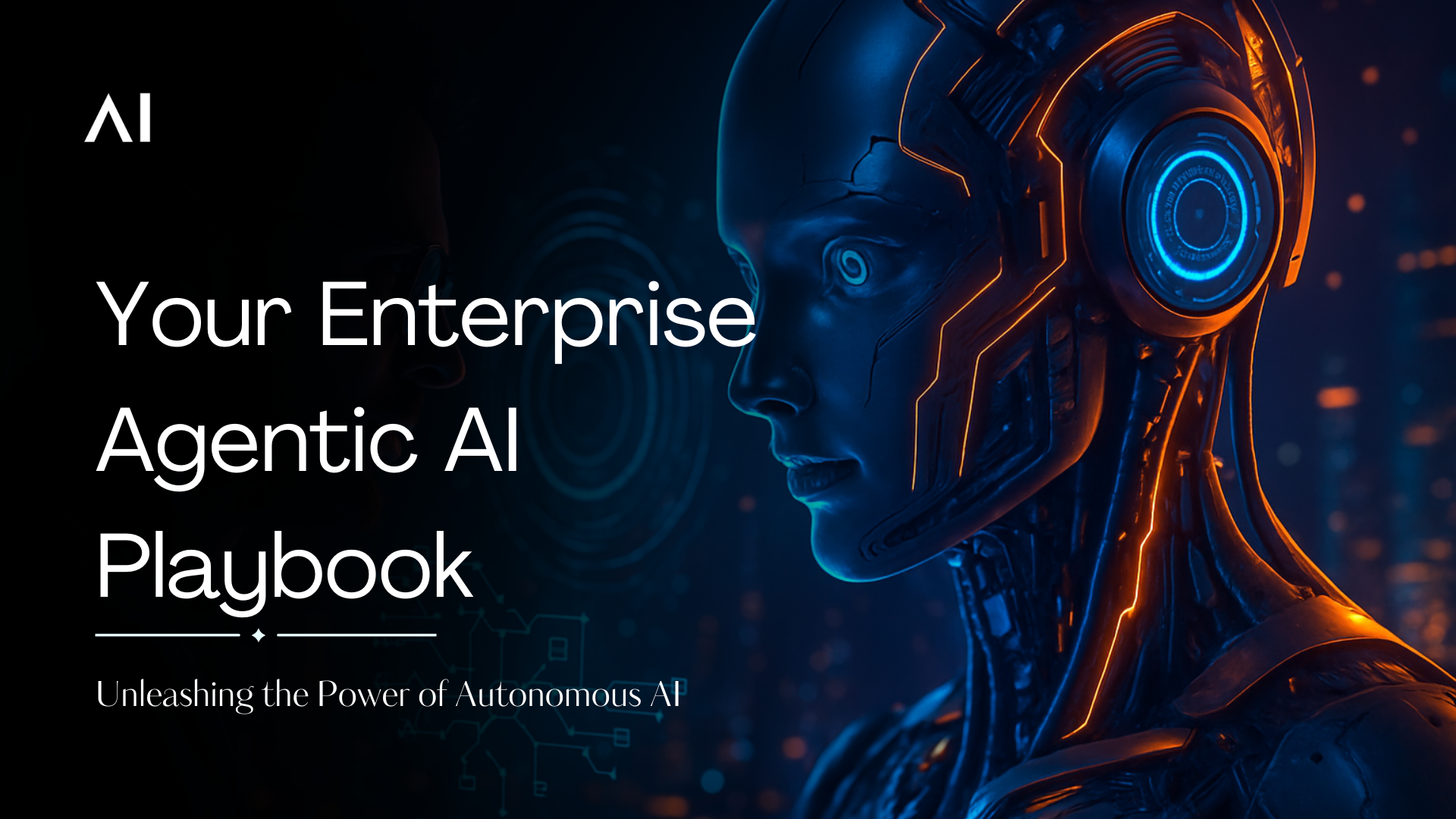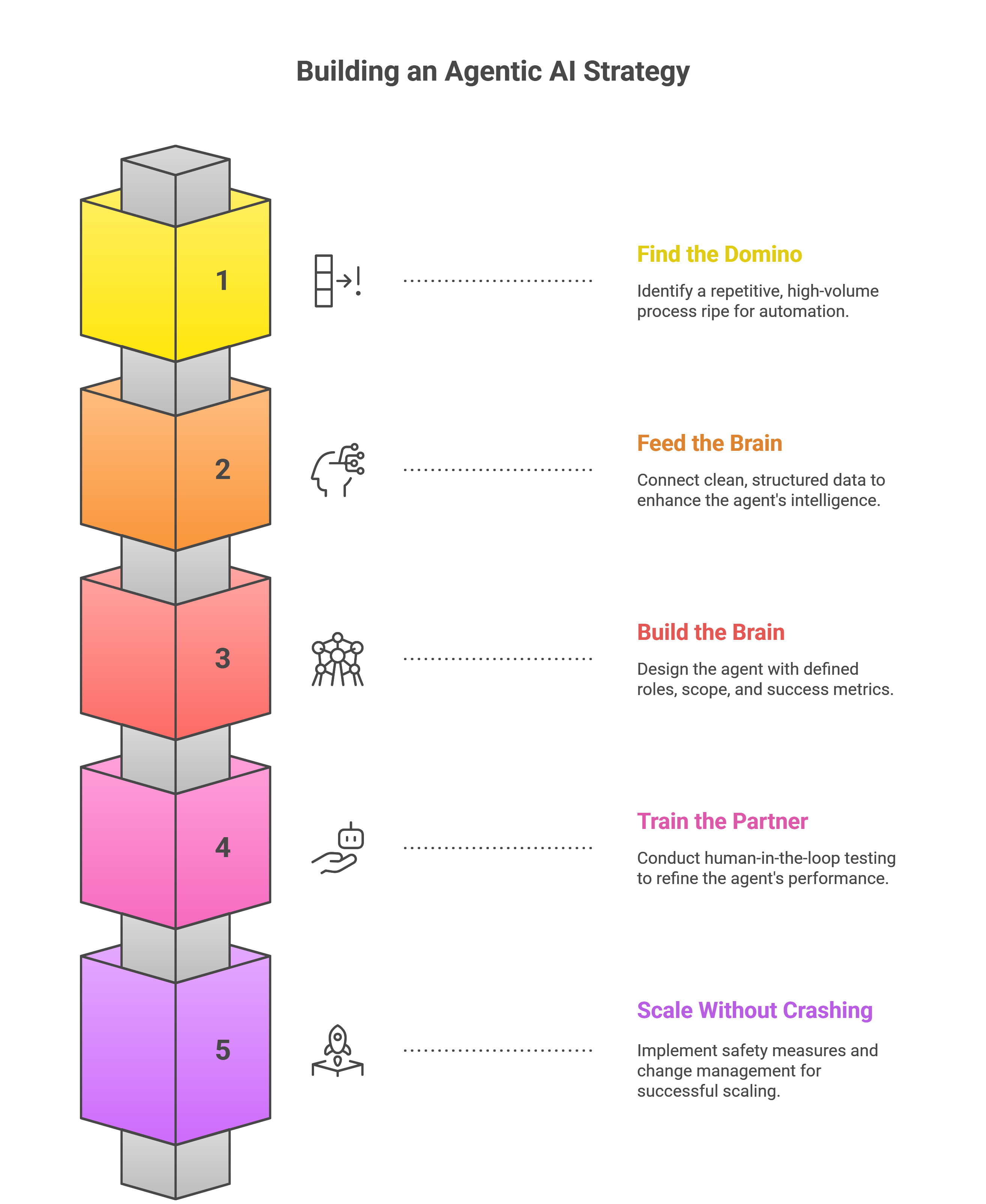Join our WhatsApp Community
AI-powered WhatsApp community for insights, support, and real-time collaboration.
Learn how to build an enterprise-ready Agentic AI strategy with this 5-phase playbook—from pilot use case to full-scale intelligent automation.

| Why is AI important in the banking sector? | The shift from traditional in-person banking to online and mobile platforms has increased customer demand for instant, personalized service. |
| AI Virtual Assistants in Focus: | Banks are investing in AI-driven virtual assistants to create hyper-personalised, real-time solutions that improve customer experiences. |
| What is the top challenge of using AI in banking? | Inefficiencies like higher Average Handling Time (AHT), lack of real-time data, and limited personalization hinder existing customer service strategies. |
| Limits of Traditional Automation: | Automated systems need more nuanced queries, making them less effective for high-value customers with complex needs. |
| What are the benefits of AI chatbots in Banking? | AI virtual assistants enhance efficiency, reduce operational costs, and empower CSRs by handling repetitive tasks and offering personalized interactions. |
| Future Outlook of AI-enabled Virtual Assistants: | AI will transform the role of CSRs into more strategic, relationship-focused positions while continuing to elevate the customer experience in banking. |
Forget chatbots that just answer FAQs. Forget dashboards that leave insights up to you. We’re stepping into a world where AI doesn’t just assist—it acts.
Agentic AI is here. It reasons. It plans. It executes. And it does it all without waiting for a human to prompt it at every step.
This playbook isn’t a trend report. It’s a strategic guide. You’ll learn how to move from basic automation to true autonomy—where AI handles workflows, not just tasks.
Agentic AI didn’t drop out of the sky. It built up layer by layer:
Let’s say a customer emails support about a billing issue. An Agentic Email Agent reads the tone, pulls up the account history, prioritizes the ticket based on urgency, drafts a human-like response, and routes unresolved actions to the right department—all without human help.
Now imagine a voice bot in a Tier 1 bank. A user calls in to change their credit card limit. The Agentic Voice Agent verifies identity, pulls real-time eligibility, navigates internal approval APIs, and executes the change—in one uninterrupted flow. That’s autonomy in action.
These aren’t tools. They’re teammates. And today, we’ve entered the mature era—enterprise-grade AI agents that think, act, adapt, and self-improve.
Let’s keep it simple.
Traditional AI is like a librarian. You ask a question, it gives an answer.
Agentic AI is a detective. You hand it a case—it investigates, pulls records, uses tools, and gives you the solution, ready to act on.
Here’s how it breaks down:
Agentic systems can act independently, taking initiative without being micromanaged. They don’t just wait for input—they anticipate needs.
They evaluate complex scenarios, make decisions under uncertainty, and adjust based on evolving data—more than just surface-level pattern recognition.
Agentic AI lays out clear sequences to reach goals. For example, booking a ticket isn’t one API call. It checks calendars, suggests alternate routes, handles payment, and confirms preferences.
These agents can write to databases, hit APIs, ping Slack, generate dashboards, and more. Think of them as operational nodes across your tech stack.
Over time, they retain what works and what doesn’t. They recognize recurring users, anticipate preferences, and get sharper with each task.
Agentic AI doesn’t just give you gains. It gives you leverage. Let’s break that down:
In a leading e-commerce platform, Agentic AI handles 85% of customer returns and refund queries without human agents. It integrates with logistics, payment systems, and CRM—resolving in under 90 seconds.
In manufacturing, agents optimize shift scheduling based on demand spikes, raw material availability, and human preferences—boosting throughput while cutting overtime costs.
Finance teams use Agentic agents to analyze quarterly performance, flag risk anomalies, and suggest cashflow corrections within hours of month-end—something that would take humans 2 weeks.
These agents pull structured and unstructured data from multiple sources—ERP systems, emails, contracts, news feeds—and turn it into proactive insight.
An Agentic HR copilot at a telecom firm constantly fine-tunes onboarding journeys. It learns which documents cause drop-offs, which queries stall applicants, and fixes them before HR even notices.
Agentic AI doesn’t wait for a quarterly audit. It self-audits.
AI agents don’t just answer. They engage. A multilingual voice agent in a Caribbean bank offers KYC assistance in Hindi, Spanish, or French Creole—adjusting its tone and style based on user demographics.
From balance checks to card blocking to fraud alerts—the experience feels personal, even when scaled to millions.
Automation has always promised cost savings. But Agentic AI delivers compound value: lower costs and better performance. You don’t need to trade off between lean and exceptional anymore.
You don’t build Agentic AI in a sprint. You scale it like a product.

Start with one process that’s:
Pick something where an autonomous agent could make a visible dent fast.
Example: Complaint resolution in banking. 4 systems. 3 steps. 10 FTEs. A perfect pilot zone.
Your agent is only as smart as the data it sees.
Don’t forget governance. Audit trails and access control matter—especially in regulated sectors.
Now design your agent.
Agents aren’t just fine-tuned LLMs. They’re orchestrators, planners, executors.
No agent goes live without human testing.
The best agents evolve through exposure.
Scaling isn’t just infra. It’s people + process + safety.
Don’t forget change management. Agents will shift org behavior. Plan for that.
Agentic AI is already shaping next-gen enterprises. Here's where it's heading:
Soon, having a dozen intelligent agents will be as normal as having SaaS apps today.
Here’s your play:
Agentic AI is not another tool. It’s an operational shift.
Start now. Lead later. The future is already automated.
You’ve got the playbook. Time to use it.
Fluid AI is an AI company based in Mumbai. We help organizations kickstart their AI journey. If you’re seeking a solution for your organization to enhance customer support, boost employee productivity and make the most of your organization’s data, look no further.
Take the first step on this exciting journey by booking a Free Discovery Call with us today and let us help you make your organization future-ready and unlock the full potential of AI for your organization.

AI-powered WhatsApp community for insights, support, and real-time collaboration.
.webp)
.webp)

Join leading businesses using the
Agentic AI Platform to drive efficiency, innovation, and growth.
AI-powered WhatsApp community for insights, support, and real-time collaboration.